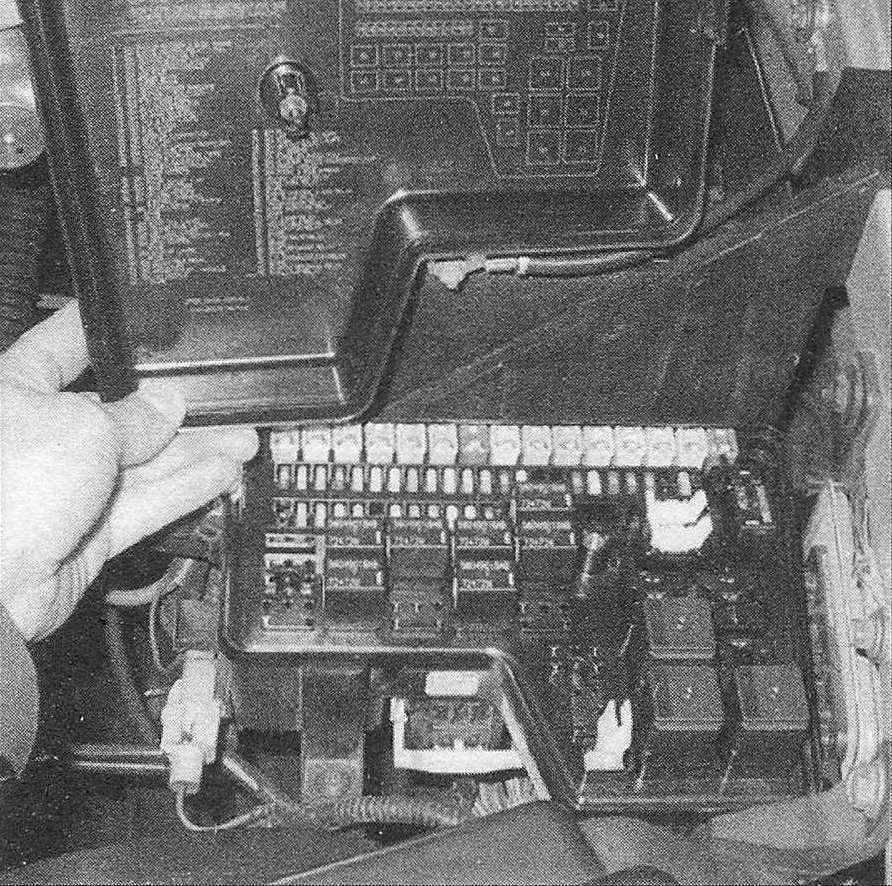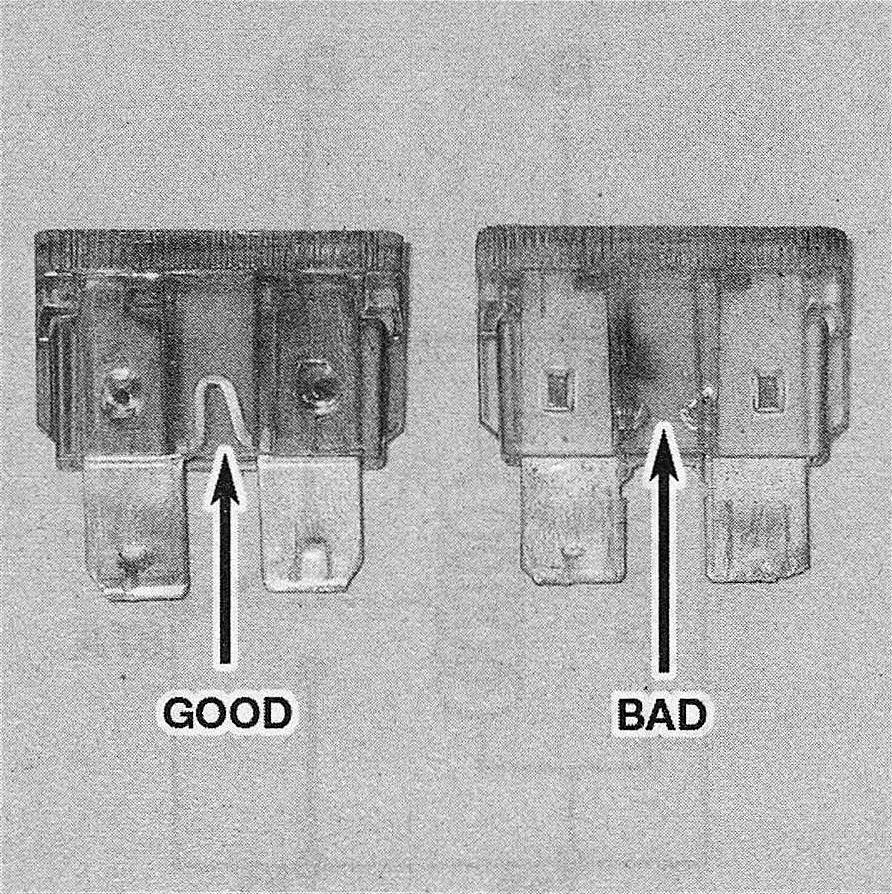Fuses – general information
The electrical circuits of the vehicle are protected by a combination of fuses and circuit breakers. The fuse and relay box is located on the left side of the engine compartment (see illustration). At a dealer parts department you might hear the phrase «Power Distribution Center» or «Integrated Power Module.» These are just manufacturer terms for the fuse and relay box. In this manual, we simply use the term «fuse and relay box.»
3.1 The fuse and relay box is located at the left front corner of the engine compartment. To locate a fuse or relay, refer to the fuse and relay guide imprinted on the underside of the lid
The electrical system is a 12-volt, negative ground type. A lead/acid-type battery that is charged by the alternator supplies power for the lights and all electrical accessories.
Each of the fuses is designed to protect a specific circuit, and the various circuits are identified on the fuse panel itself.
Different sizes of fuses are employed in the fuse blocks. There are mini and maxi sizes, with the larger located in the fuse and relay box. The maxi fuses can be removed with your fingers, but the mini fuses require the use of pliers or the small plastic fuse-puller tool found in most fuse boxes. If an electrical component fails, always check the fuse first. The best way to check the fuses is with a test light. Check for power at the exposed terminal tips of each fuse. If power is present at one side of the fuse but not the other, the fuse is blown. A blown fuse can also be identified by visually inspecting it (see illustration).
3.3 When a fuse blows, the element between the terminals melts
Replace blown fuses with the correct type. Fuses of different ratings are physically interchangeable, but only fuses of the proper rating should be used. Replacing a fuse with one of a higher or lower value than specified is not recommended. Each electrical circuit needs a specific amount of protection. The amperage rating of each fuse is molded into the fuse body.
If the replacement fuse immediately fails, don’t replace it again until the cause of the problem is isolated and corrected. In most cases, the cause will be a short circuit in the wiring caused by a broken or deteriorated wire.

